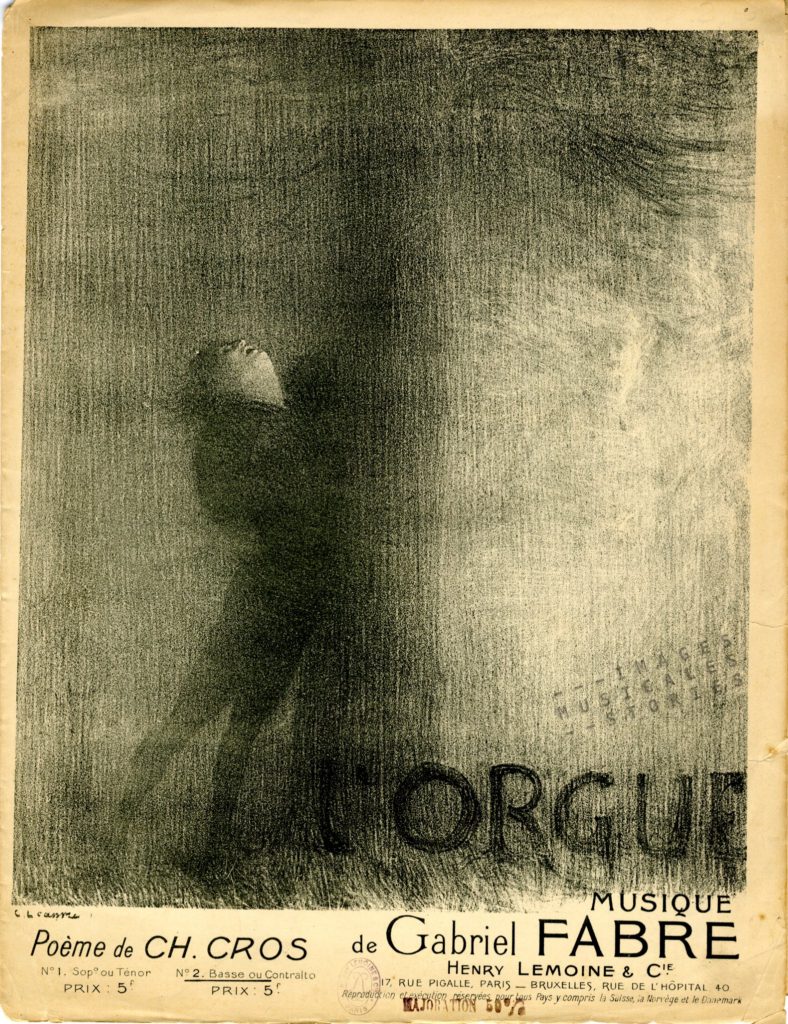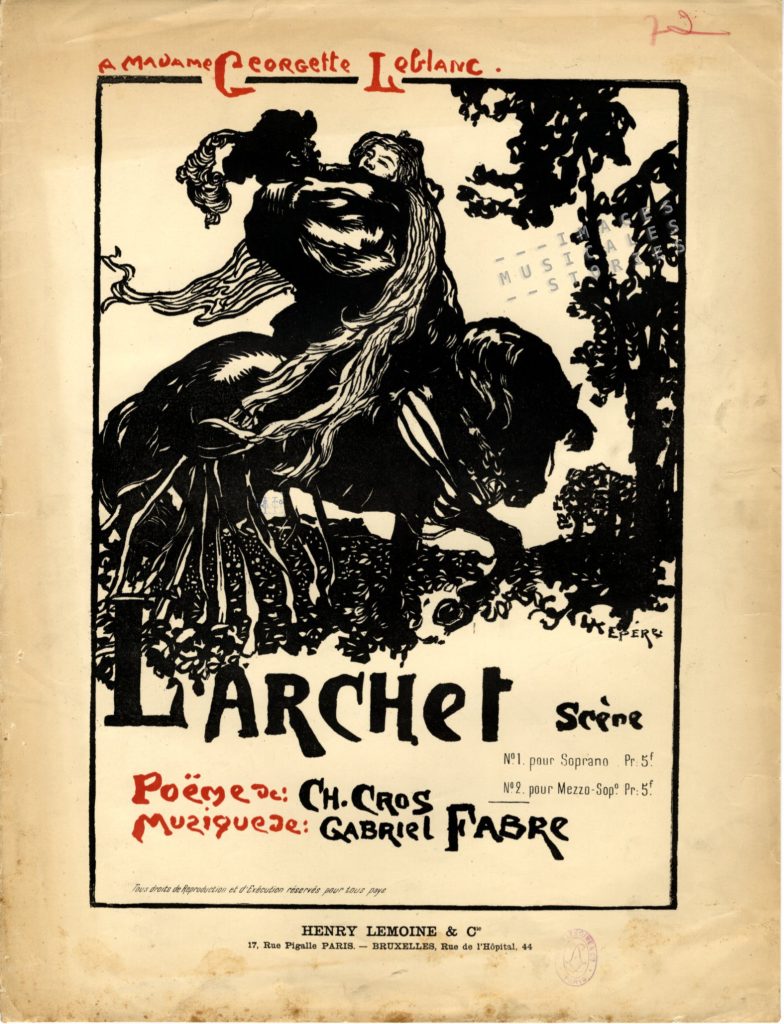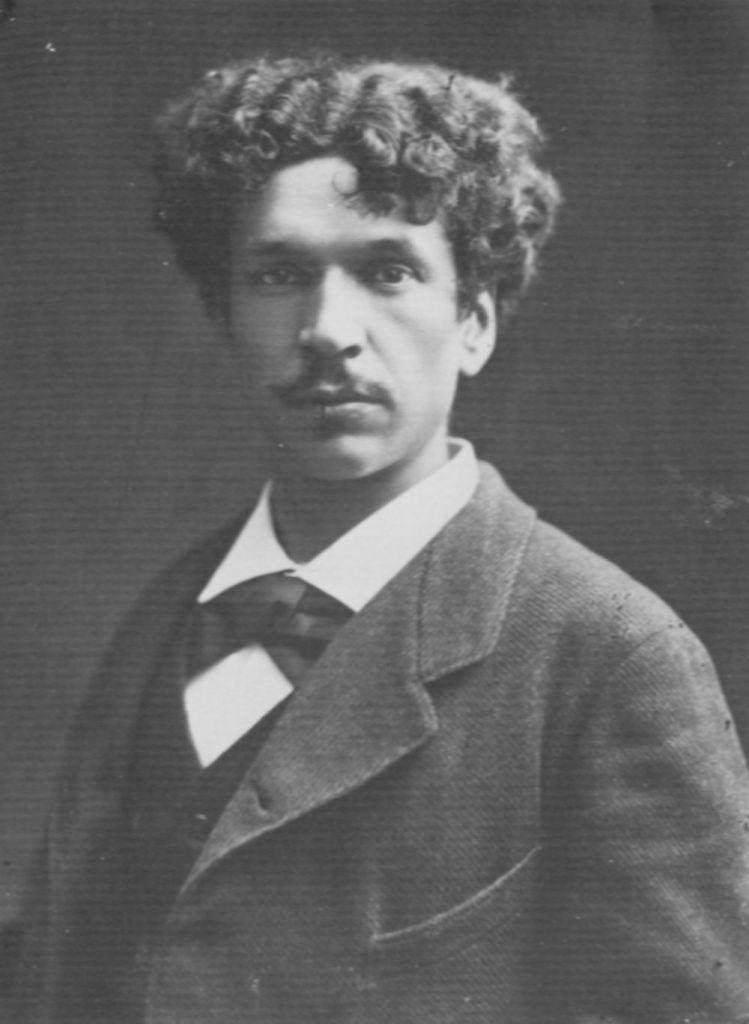
The cover of L’Orgue, magnificently illustrated by Charles Léandre, oozes end-of-the-century gloom, a typical form of expression of the Parisian Symbolist and Decadent artistic movement. The composer of the music for L’Orgue is Gabriel Fabre, now a forgotten symbolist, but in his time a well known artist, successful in all of the salons. For his short melodies and piano works he sought inspiration from texts by Verlaine, Mallarmé, Maeterlinck and Charles Cros. He —or his publisher— chose fine artists to illustrate the covers of his scores, such as Lepère, Signac, Le Sidaner or Léandre.
The poet who wrote the lyrics for L’Orgue is Charles Cros (1842-1888), one of the poètes maudits. Cros was friends with the notorious Paul Verlaine and Arthur Rimbaud. This friendship halted in 1872 when Cros sided with the abandoned wife (and son) of Verlaine, who preferred to continue his stormy affair with Rimbaud in faraway London…

The unconventional Charles Cros was also an amateur scientist and inventor. He was largely self-taught and had a wide interest, amongst others in chemistry, physics, medicine and oriental languages. His scientific papers include theories on improved telegraph equipment, colour photography, and communication with the inhabitants of Mars or Venus by means of signals flashed by huge mirrors. Contemporary scientists considered his work as ludicrous.

Charles Cros, who most of the time was penniless, lacked the flair for business. Often he was too late or without financial resources to create prototypes, or he forgot to patent his inventions. His biggest missed opportunity was the invention of the phonograph.
In April 30, 1877, he deposited a paper in a sealed envelope with the Parisian Académie des Sciences describing the principle of a sound reproduction device, which he called paléophone. He stated that sound vibrations can be engraved in metal using a pencil attached to a vibrating membrane. Subsequently, by sliding a stylus attached to another membrane over this engraving, one would be able to reproduce the original sound. Before Charles Cros had the opportunity to follow up on his idea, or even build a prototype, Thomas Edison in the US developed and patented his phonograph on January 15, 1878. When this news reached Paris, Cros asked the Academy to open his sealed envelope to prove that he had invented this technical concept first.
The bohemian lifestyle of Charles Cros and his addiction to absinthe contributed to his early death in 1888, aged 45. It is said Cros drank as many as 20 absinthes a day. Sadly, he is now remembered for almost having invented the phonograph.
And I, I almost cut my hair!
